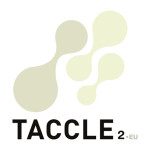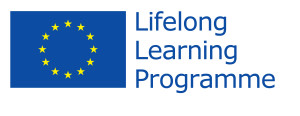Overview
In the final activity, students create digital artefacts in response to the work of other groups. Then they use their best prompts in a public campaign. Finally, students reflect on what has worked, what hasn’t worked and why.
Description
The students now look at the photo prompts of other groups and choose which ones they want to respond to. They can opt to create their own digital response or do it as a group. When everybody has posted their responses they discuss what they liked and explain why. Draw their attention to which prompts received a lot of attention and which ones did not. Why do they think this happened? Give them time to edit and improve their prompts in response to the feedback.
Next they can post their photo prompts on a social media platform approved by the school – this may be just the school’s website, which is fine. If you want to take it a step further, let them campaign to get responses via social media but ensure that you have the school’s permission to do this. If your school has a LCD or digital advertising display monitor set up somewhere (often in reception) ask if they can use this for a few days. Ultimately, students will choose the channels they think are best to grow and activate their network and gauge how successful their campaign has been.
Finally they can add the photo prompts/digital artefacts they consider to be their best work to an e-portfolio. Let them explain their choices in an on line reflective journal or blog.
Time needed The main body can be done in a 3-4 hours but it can take several weeks to gauge the success of the campaigns.
Resources
-
Again, don’t try to be too restrictive in the software the students use. Help them if/when it is appropriate. If you aren’t familiar with the applications they’ve chosen don’t worry about it – it’s impossible to be familiar with them all! Just try to keep an overview of the different applications that students/groups are using – those that are particularly fluent in the use of a specific platform can become the nominated ‘specialist’ and can help and advise those less familiar.
-
Tools like Glogster, ThingLink and Prezi are ideal for presenting ideas and getting attention.
-
Twitter, Facebook, blogs, Google+, LinkedIn are all well suited to create and expand a network. You should choose your platforms according to their appropriateness for your students and what is allowed under school policy.
-
Mahara is one of the best open source e-Portfolio’s but there are many more to choose from www.mahara.org.
Hints and tips
- Always encourage your students to be constructive in their critique of an ‘unsuccessful’ photo prompt. That doesn’t mean that students can’t be critical, but it’s your job to ensure they aren’t disrespectful or cruel.
- If your students are relatively new to using social media they will need a lot of guidance. Consider setting up a unique Facebook or Twitter account for this project. Many schools now have a Twitter account – which is great – which means that students have an established audience to target during their campaign! If your school doesn’t allow the use of social media skip this activity or talk to the people in charge. Of course, you could go old skool and print their photo prompts on paper and post them around the school. Ask other students to make their own digital artefact in response to these prompts.
This post is also available in: Dutch




 English
English Nederlands
Nederlands Deutsch
Deutsch Italiano
Italiano Español
Español Português
Português Română
Română Cymraeg
Cymraeg
No comments yet.